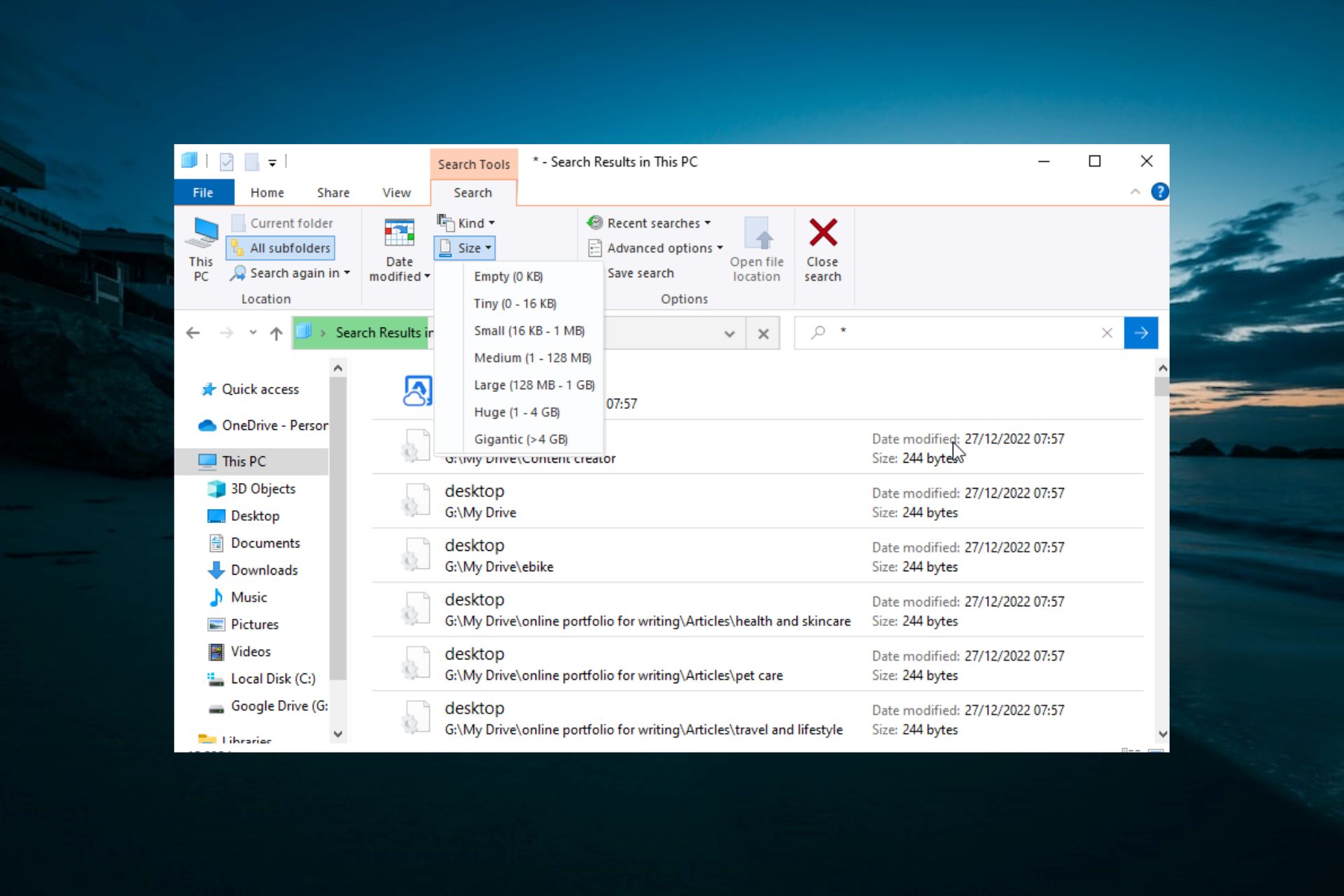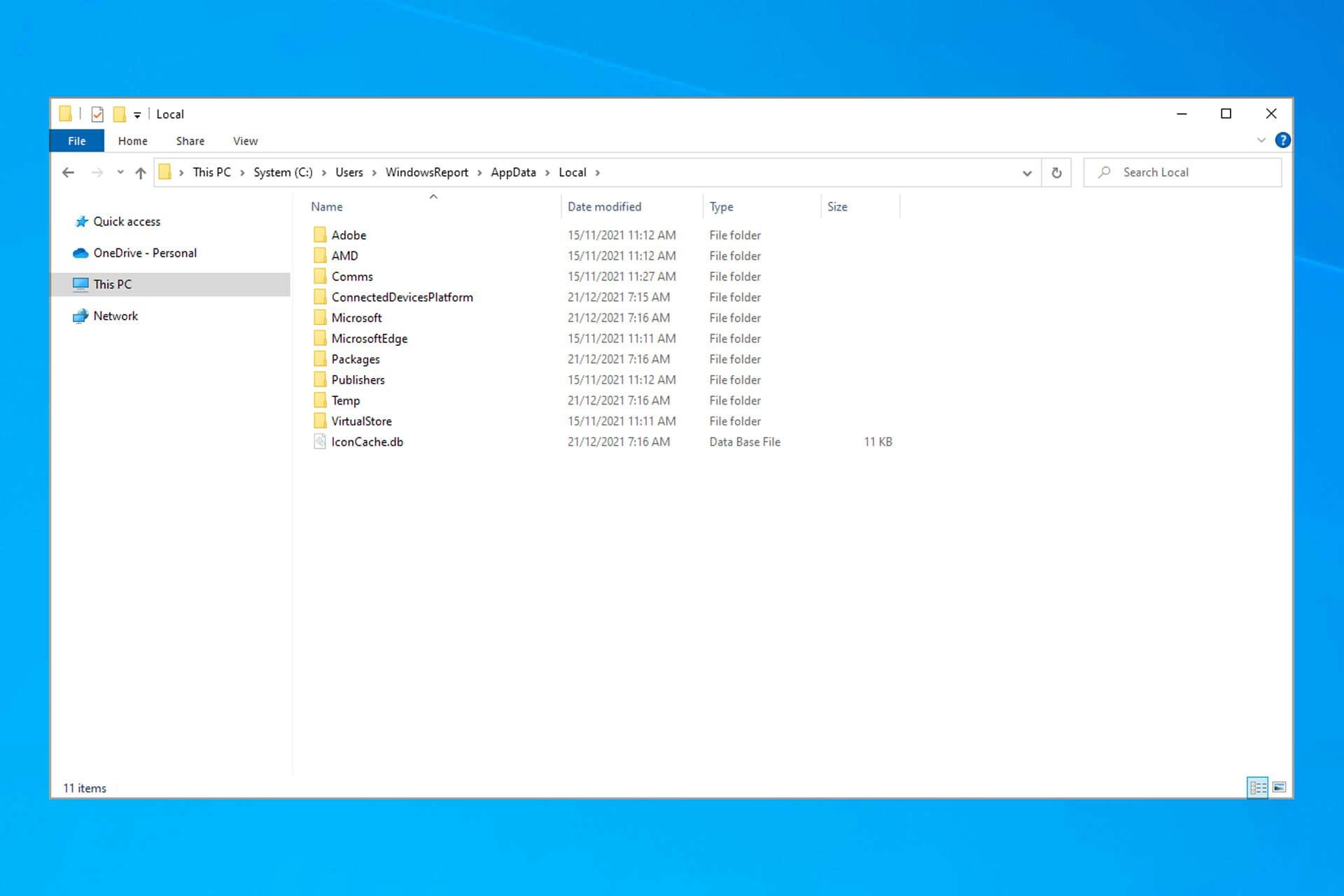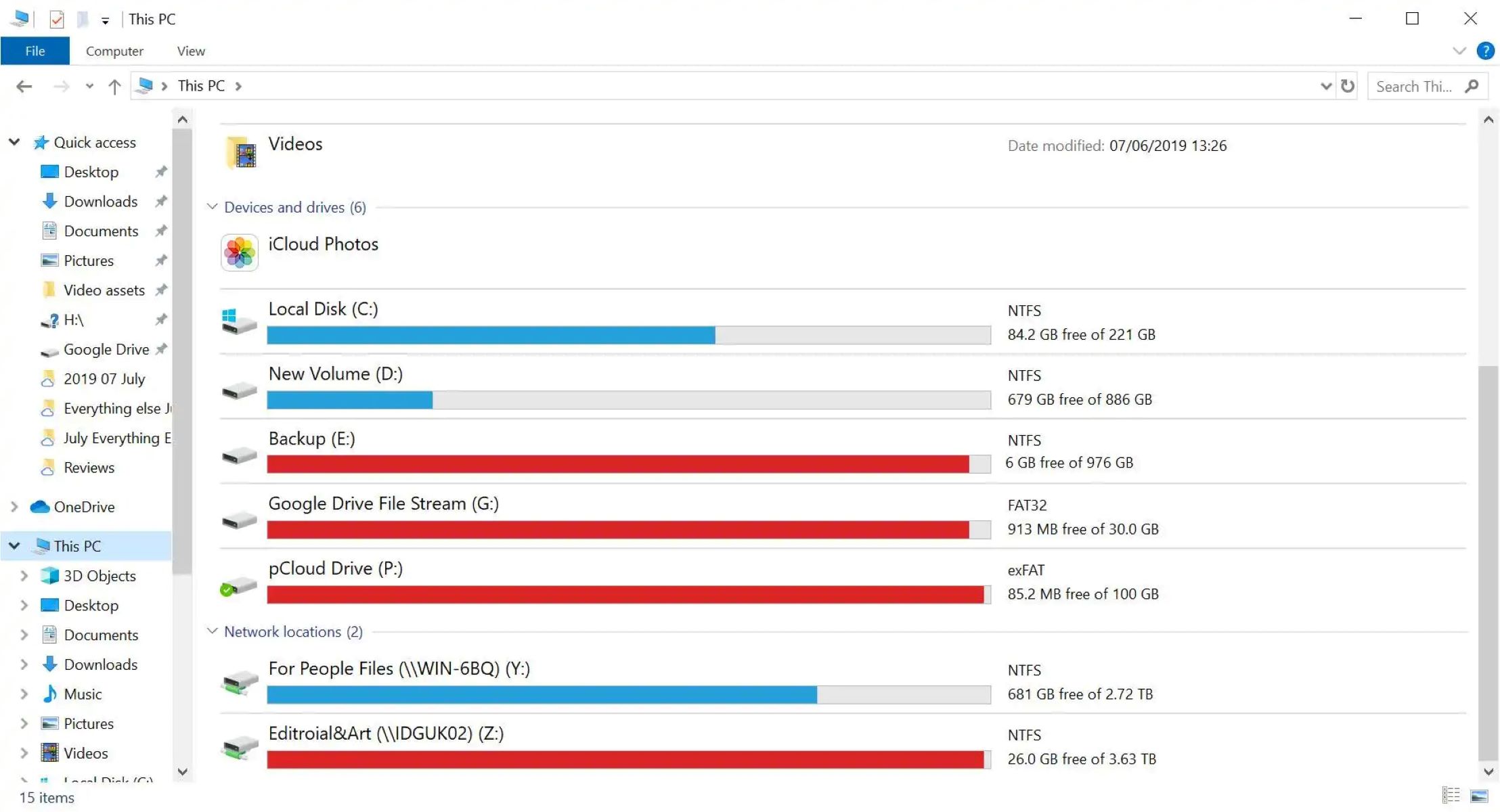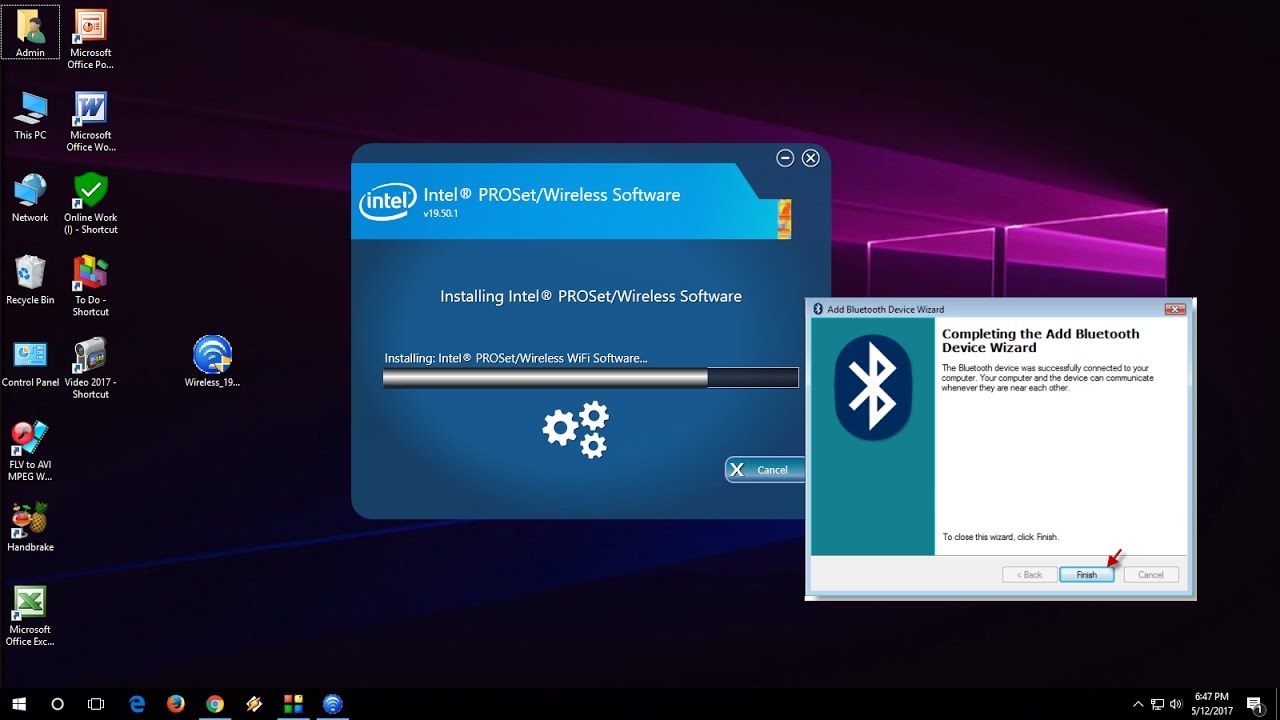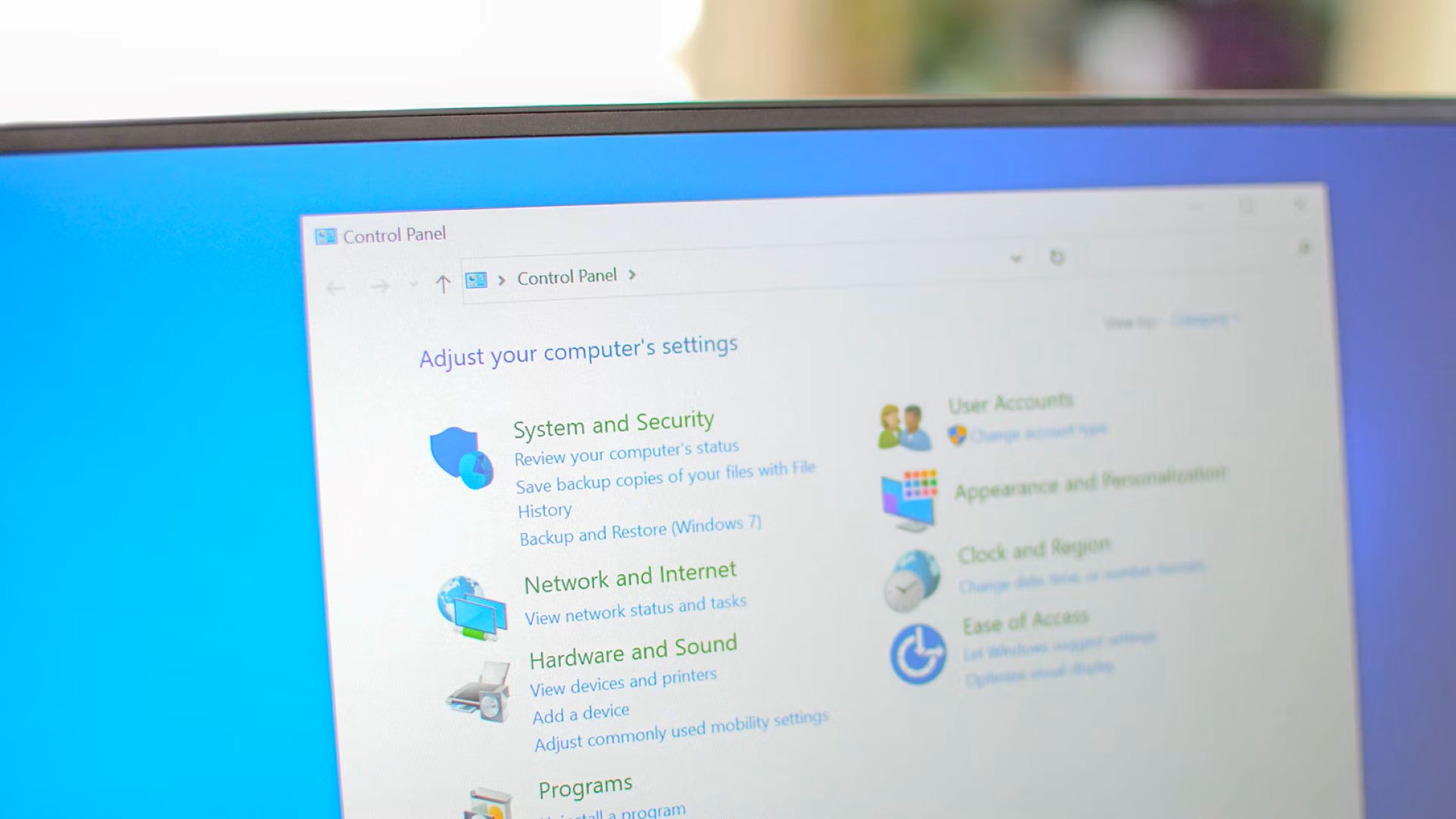Introduction
Searching for files on your Windows 10 computer can sometimes be a daunting task, especially if you have a lot of documents, photos, or other types of files spread across various folders and drives. However, Windows 10 provides several tools and techniques to make the file search process more efficient and convenient. Whether you are looking for a specific document, an image, or a program, you can rely on the built-in search capabilities of Windows 10 to help you quickly locate the files you need.
In this article, we will explore different methods for searching for files in Windows 10. We will cover how to use the search bar, search with File Explorer, apply advanced search techniques, search for specific file types and extensions, choose specific locations to search, utilize filters, search for recently modified files, search for files of a specific size, and use boolean operators for complex searches.
By mastering these techniques, you will be able to streamline your file search process and locate the files you need in a faster, more efficient manner. Whether you are a casual user looking for a specific photo or a power user searching for important documents, these search methods will empower you to find your files with ease.
So, let’s dive in and discover how to effectively search for files in Windows 10!
Using the Search Bar
One of the simplest and most convenient ways to search for files in Windows 10 is by utilizing the search bar. Located on the taskbar, the search bar allows you to quickly search for files, apps, settings, and even web results. It’s a powerful tool that can save you valuable time and effort.
To start using the search bar, simply click on it or press the Windows key on your keyboard. This will open the search bar and you can start typing in your search query. As you type, Windows will start displaying instant results, matching your query from various sources.
By default, the search bar shows the most relevant results, but you can easily filter the results to display only files. To do this, click on the “Filters” option right below the search bar and select “Files” from the dropdown menu.
Additionally, you can refine your search further by specifying the file name, file type, or even a specific keyword within the file. For example, if you are looking for a document with the word “project” in its title, you can simply type “project” in the search bar, and Windows will display all the files containing that keyword.
The search bar also allows you to search for recent files, making it even more convenient to access your most frequently used documents. Simply click on the “Recent” option above the search bar to view the list of recently accessed files.
Furthermore, you can customize the search bar settings to fit your preferences. Right-click on the taskbar, select “Search”, and choose from options such as hiding the search bar, showing the search icon instead, or allowing Windows to show search suggestions as you type.
Overall, the search bar in Windows 10 provides a quick and efficient way to search for files on your computer. It’s a versatile tool that can be easily customized and tailored to your specific needs, allowing you to find the files you need with ease.
Searching with File Explorer
File Explorer is a powerful file management tool in Windows 10 that not only helps you navigate through your files and folders but also allows you to perform advanced searches to locate specific files.
To search for files using File Explorer, open File Explorer by clicking on the folder icon on the taskbar or by pressing the Windows key + E on your keyboard. Once open, you can start your search by clicking on the search bar located in the top-right corner of the File Explorer window.
By default, File Explorer searches for files matching your search query in the current folder and its subfolders. However, you can change this behavior by selecting the “This PC” option, which will search for files across all drives and locations on your computer.
As you start typing in the search bar, File Explorer will display instant results that match your search query. The search results are dynamic and update in real-time as you type.
File Explorer offers various search filter options to help you narrow down your search results. Clicking on the “Search” tab in the File Explorer toolbar will reveal additional search filter options such as Date Modified, Size, and Type.
You can utilize these filters to refine your search based on specific criteria. For example, you can search for files modified within a certain date range or specify a file type to narrow down the results.
In addition to the search bar and filters, File Explorer also supports advanced search operators. These operators allow you to perform more complex searches based on specific conditions. For example, you can use the AND operator to search for files that contain multiple keywords or the NOT operator to exclude certain words from the search results.
By combining the search bar, filters, and advanced operators, you can perform detailed searches to quickly find the files you need. File Explorer offers a comprehensive set of tools that cater to both basic and advanced search requirements, making it a valuable resource in your file search endeavors.
Advanced Search Techniques
While the search bar and File Explorer provide basic file search functionality, Windows 10 also offers advanced search techniques to further enhance your ability to find specific files. These techniques allow you to perform more precise searches and save time by quickly locating the files you need.
One advanced search technique is the use of wildcards. Wildcards are symbols that represent unknown characters or a range of characters in a search query. The most commonly used wildcards are the asterisk (*) and the question mark (?). The asterisk represents any number of characters, while the question mark represents a single character. For example, if you’re looking for a file with a specific pattern but don’t remember the exact name, you can use a wildcard to search for files that match a certain pattern.
Another powerful technique is the use of search operators. Windows 10 supports various search operators that allow you to perform more complex searches. Here are some commonly used operators:
- The AND operator: Allows you to search for files that contain multiple keywords. For example, searching for “presentation AND budget” will find files that contain both the words “presentation” and “budget”.
- The OR operator: Allows you to search for files that contain any of the specified keywords. For example, searching for “document OR spreadsheet” will find files that contain either the word “document” or “spreadsheet”.
- The NOT operator: Allows you to exclude specific words from the search results. For example, searching for “report NOT draft” will find files that contain the word “report” but not the word “draft”.
By combining wildcards, search operators, and other search criteria, you can perform advanced searches to pinpoint the exact files you’re looking for, even in complex file hierarchies.
Additionally, Windows 10 offers the ability to save search queries as search folders. A search folder is a virtual folder that displays the results of a saved search query. This allows you to quickly access the files that match specific criteria without having to perform the search every time. To create a search folder, perform the desired search query, click on the “Save search” button in the File Explorer toolbar, and specify the location and name for the search folder.
These advanced search techniques provide a higher level of precision and flexibility in searching for files in Windows 10. By mastering these techniques, you can efficiently locate files based on specific patterns, combine multiple search criteria, and save recurring search queries for easy access.
Searching for File Types and Extensions
When searching for files in Windows 10, you may often need to filter your search based on specific file types or extensions. Windows 10 provides a simple and effective way to search for files that match specific file types or extensions, allowing you to quickly locate files of a particular format.
To search for files based on file types or extensions, you can use the “type:” keyword in the search bar or File Explorer search box, followed by the desired file type or extension. For example, if you’re looking for all the image files on your computer, you can type “type:image” or “.jpg” to search for files with the JPEG extension.
This method allows you to search for files of various types, including documents, images, music, videos, and more. By specifying the desired file type or extension, you can quickly narrow down your search results to the specific type of file you’re looking for.
Additionally, Windows 10 provides a list of predefined filters that you can use to search for specific file types. For example, you can use the “kind:” filter followed by options like “document”, “picture”, “music”, or “video” to search for files belonging to those categories.
Furthermore, if you frequently need to search for files of a specific type, you can create a search filter that saves the search criteria for future use. To do this, perform the desired file type search, click on the “Save search” button in the File Explorer toolbar, and specify the location and name for the saved search filter.
By leveraging these file type and extension search techniques, you can efficiently locate files based on their specific format or category. Whether you’re searching for documents, images, music, videos, or any other file type, Windows 10 provides the necessary tools to streamline the search process and help you find the files you need.
Choosing Specific Locations to Search
When searching for files in Windows 10, you may want to narrow down your search to specific locations on your computer. Whether you’re looking for files in a specific folder, a specific drive, or a combination of both, Windows 10 allows you to choose the exact locations to search, helping you find files more efficiently.
When using the search bar on the taskbar, by default, Windows 10 searches across your entire computer. However, you can refine your search by specifying a specific location. To do this, after entering your search query in the search bar, click on the “My stuff” dropdown menu to the right of the search bar. From there, you can choose to search in specific folders, such as Documents, Pictures, or Downloads, or you can select “This PC” to search across all drives and folders.
If you prefer to use File Explorer for your search, you have even more control over the specific locations to search. Simply open File Explorer and navigate to the folder or drive where you want to initiate the search. Then, enter your search query in the search bar located in the top-right corner of the File Explorer window. File Explorer will restrict the search to the current folder or drive and its subfolders.
Additionally, File Explorer provides a useful feature called “Search in this folder” that allows you to further narrow down your search to only the current folder, excluding subfolders. To use this feature, right-click on the folder you want to search and select “Search within folder” from the context menu. This is especially helpful when you have a large folder with numerous subfolders and you only want to search within the current directory.
By choosing specific locations to search, you can save time and effort by avoiding unnecessary search results from unrelated locations. Whether you’re focusing on a specific folder, a specific drive, or a combination, Windows 10 empowers you to search more efficiently and locate the files you need without the clutter of irrelevant search results.
Utilizing Filters
When searching for files in Windows 10, utilizing filters can greatly enhance your search process by allowing you to refine your search results based on specific criteria. Windows 10 offers a variety of filters that can help you narrow down your search and find the files you need more effectively.
Filters in Windows 10 can be accessed in both the search bar and File Explorer. In the search bar, simply click on the “Filters” option below the search bar to reveal the available filters. These filters include Date modified, Size, Type, and More. By selecting one or multiple filters, you can limit your search to files that meet the specified criteria.
In File Explorer, the search filters can be found under the “Search” tab in the File Explorer toolbar. Here, you have access to various filter options such as Date modified, Size, Type, and Advanced search. These filters allow you to further narrow down your search results based on specific attributes of the files.
For example, suppose you are looking for a document that you recently modified. You can apply the “Date modified” filter and choose the option “This week” to only display files that were modified within the current week. This filter helps you locate files that are most likely to contain the information you need.
Similarly, the “Size” filter allows you to set a specific file size range to search within. This can be useful when you are looking for large files or trying to locate a small file that may have been accidentally deleted or misplaced.
The “Type” filter allows you to filter files based on their format or file extension. By selecting a specific file type from the filter options, you can narrow down your search to only files of that particular format. This is especially helpful when searching for specific types of media files or documents.
Lastly, the “Advanced search” filter provides additional custom search options, such as searching by file attributes like author, title, or keywords. This filter is particularly useful when you need to search for files based on specific metadata information associated with them.
By utilizing filters, you can significantly streamline your file search process in Windows 10. Filters allow you to focus your search on specific file attributes and criteria, helping you quickly locate the files you need without having to sift through irrelevant search results.
Searching for Recently Modified Files
When you’re searching for files in Windows 10, you may often need to find files that have been recently modified. Whether you need to locate a document you were working on earlier or find the most up-to-date version of a file, Windows 10 provides options to search for recently modified files.
One way to search for recently modified files is by using the search bar on the taskbar. Click on the search bar, enter your search query, and then click on the “Filters” option below the search bar. From there, select the “Date modified” filter and choose one of the predefined time ranges, such as “Today”, “Past week”, or “Past month”. Windows 10 will display the files that have been modified within the selected time range.
If you prefer using File Explorer for your file search, you can also search for recently modified files by applying the “Date modified” filter. In File Explorer, navigate to the folder or drive where you want to search and enter your search query in the search bar. Then, click on the “Search” tab in the File Explorer toolbar and select the “Date modified” filter. Choose the desired time range, and File Explorer will show you the files that meet the specified criteria.
By searching for recently modified files, you can quickly find the most relevant and up-to-date versions of your documents, projects, or any other type of file. This is particularly useful when you’re working on collaborative projects or frequently editing and updating files.
It’s worth mentioning that Windows 10 keeps track of the modification date and time for each file, ensuring that the search results accurately reflect the most recent modifications. This allows you to easily track changes and find the files that have been recently updated.
Whether you prefer using the search bar or File Explorer, Windows 10 offers efficient methods to search for recently modified files. By utilizing these techniques, you can stay organized, keep track of your latest changes, and access the most up-to-date files with ease.
Searching for Specific Size Files
When searching for files in Windows 10, you may have a specific file size requirement in mind. Whether you’re looking for large files to free up space on your hard drive or trying to locate a small file that you need for a specific purpose, Windows 10 provides options to search for files based on their size.
One way to search for files of a specific size is by using the search bar on the taskbar. Click on the search bar, enter your search query, and then click on the “Filters” option below the search bar. From there, select the “Size” filter and choose one of the predefined size ranges, such as “Tiny”, “Small”, “Medium”, “Large”, or “Gigantic”. Windows 10 will display the files that fall within the selected size range.
If you prefer using File Explorer for your file search, you can also search for files based on their size. In File Explorer, navigate to the folder or drive where you want to search and enter your search query in the search bar. Then, click on the “Search” tab in the File Explorer toolbar and select the “Size” filter. Choose the desired size range, and File Explorer will show you the files that meet the specified size criteria.
By searching for files of specific sizes, you can easily identify and manage files based on your storage capacity or specific requirements. For example, you can search for large files to delete or move them to an external storage device, freeing up valuable space on your computer. On the other hand, you can search for small files when you need to locate a specific document or file that you know has a smaller size.
Windows 10 calculates file sizes in bytes and provides different size range options to suit your search needs. However, if you have a specific file size in mind, you can also enter the size in bytes directly in the search bar or File Explorer search box. This allows for precise searching based on your defined file size requirements.
Whether you’re managing your storage space or searching for a specific size file, Windows 10 offers convenient options to search for files based on their size. By utilizing these techniques, you can easily locate files that meet your size preferences and efficiently manage your storage resources.
Using Boolean Operators for Complex Searches
When searching for files in Windows 10, you may sometimes need to perform complex searches that involve multiple keywords or specific search conditions. Windows 10 provides the capability to use Boolean operators to refine your search queries and perform more precise and advanced searches.
Boolean operators are search operators that allow you to combine multiple keywords or conditions in a search query. The three main Boolean operators supported in Windows 10 are AND, OR, and NOT.
The AND operator is used to search for files that contain all the specified keywords. For example, if you’re looking for a file that includes both “marketing” and “presentation” in its name or content, you can use the AND operator. Search for “marketing AND presentation” in the search bar, and Windows 10 will display files that meet both criteria.
The OR operator is used to search for files that contain any of the specified keywords. For example, if you’re searching for a document related to a project and it could be referenced as “project report” or “project document”, you can use the OR operator. Search for “project report OR project document”, and Windows 10 will display files that contain either of the specified keywords.
The NOT operator is used to exclude specific keywords from the search results. For example, if you’re searching for files related to a project but want to exclude any files with the word “draft” in their names, you can use the NOT operator. Search for “project NOT draft”, and Windows 10 will display files that contain the keyword “project” but not “draft”.
To use these Boolean operators, simply enter them in uppercase letters within your search query in the search bar or File Explorer search box. You can combine multiple Boolean operators in a single search query to perform even more complex searches.
By utilizing Boolean operators, you can refine your search queries and perform advanced searches based on specific conditions. Whether you’re searching for files with multiple keywords, alternative keywords, or excluding specific keywords from the search results, Windows 10’s support for Boolean operators empowers you to perform complex searches and locate the files you need with precision.
Conclusion
Searching for files in Windows 10 can sometimes feel like searching for a needle in a haystack, especially if you have a large number of files spread across different folders and drives. However, Windows 10 provides a range of powerful tools and techniques to help you efficiently search and locate the files you need.
In this article, we explored various methods for searching for files in Windows 10. We learned how to use the search bar on the taskbar to quickly find files based on keywords, as well as how to utilize File Explorer for more advanced searches. We discovered the effectiveness of using filters to refine search results based on criteria such as date modified, file size, and file type.
We also discovered the power of advanced search techniques like utilizing wildcards and search operators to perform more precise and complex searches. Moreover, we explored how to search for recently modified files, search for files based on size, and choose specific locations to search.
By utilizing these techniques and tools, you can streamline the file search process, save time, and easily find the files you’re looking for. Whether you’re a casual user seeking a specific document or a power user managing a multitude of files, Windows 10’s built-in search capabilities provide the flexibility and functionality to meet your needs.
So, the next time you find yourself in need of locating a file on your Windows 10 computer, remember to leverage the search bar, File Explorer, filters, and advanced search techniques to optimize your search and quickly locate the files you need.
With a little practice and familiarity with these tools, you’ll become a master at searching for files in Windows 10, making your file management tasks a breeze. Start exploring and discovering the power of Windows 10’s file search capabilities today!









